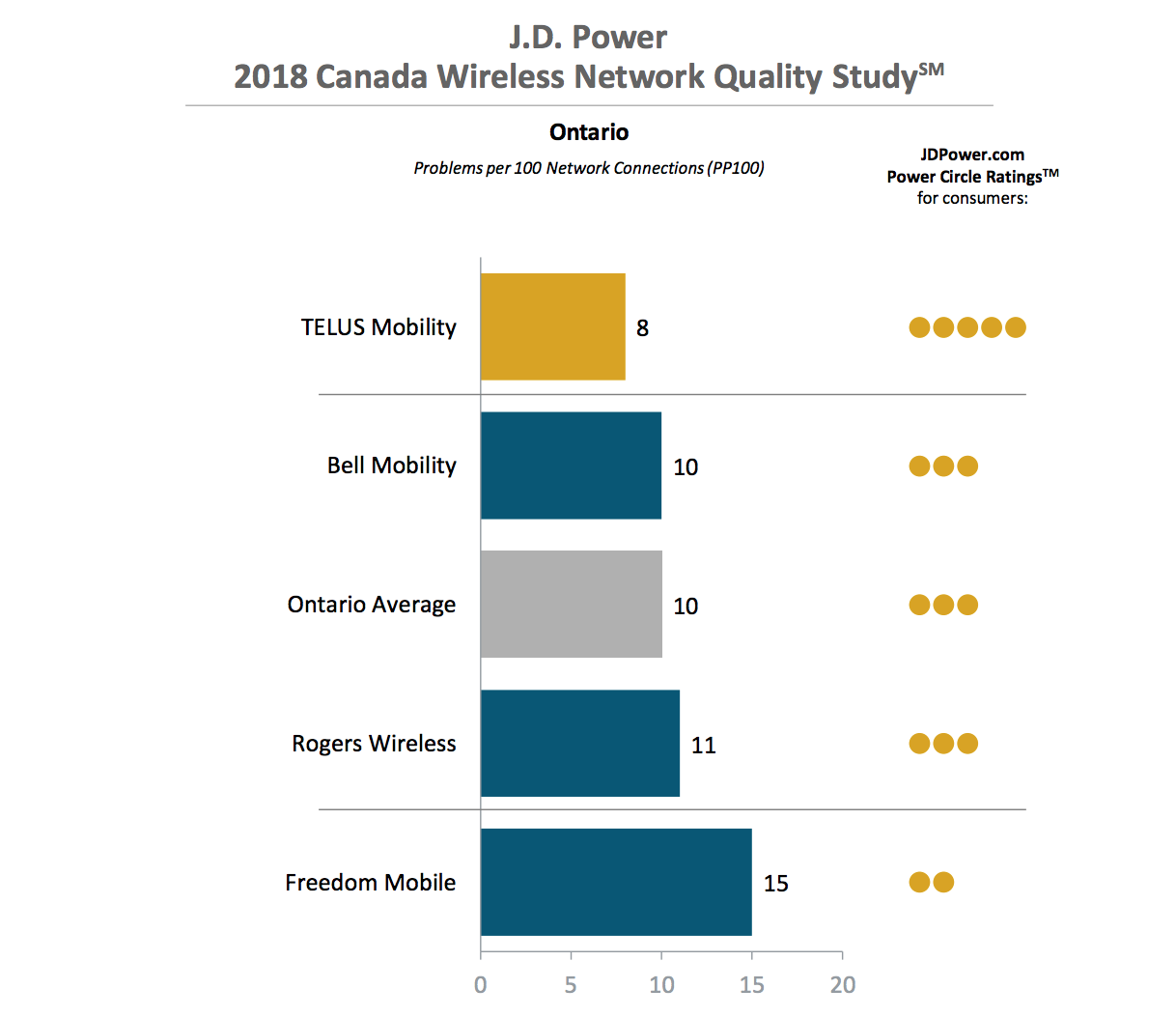
A recent study from J.D. Power Canada has lent new insight into Canadian carriers’ mobile network quality.
According to a May 10th, 2018 J.D. Power Canada Wireless Network Quality Performance Study, Telus and Videotron have the best mobile networks in Canada.
Regional carrier Videotron earned the top spot for network quality in Canada’s East region, with J.D. Power reporting that the network only suffered from an average of seven problems per 100 network connections (7PP100).
Rogers and Telus both tied for second place in the East region, with a score of 8PP100.
Telus managed to secure the lead spot in the Ontario region, with a score of 8PP100.
Bell scored second in Ontario, with 10PP100, while Rogers came in third, with 11PP100.
Interestingly enough, burgeoning power player Freedom Mobile ranked last in Ontario, with a score of 15PP100.
In the West region, J.D. Power reported that Telus earned the number one rank, with a score of 8PP100. However, regional player SaskTel also tied for first, with a scored of 8PP10.
Bell and Rogers tied for second place in this region, with a score of 10PP100.
The company ranked Canada’s carriers by monitoring three areas of smartphone use: data connection, calling and messaging.
Other insights
J.D. Power also shared that one in three Canadians now have mobile data plans that are above 5GB per month.
Additionally, J.D. Power reported that Generation Z Canadians have the highest data cap plans — 14 percent of Gen Z consumers have a data cap of 10GB or more.
Data plan sizes are generally on the rise in Canada as well. Last year only 25 percent of Canadians had data plans over 5GB and now 33 percent have opted for larger plans.
Even though Canadians are opting for larger plans, we are still lagging behind the U.S. in unlimited plan options. Only six percent of Canadians have unlimited plans compared to 36 percent south of the border.
There’s also a slight disconnect between rural and urban Canada; rural users experienced 10PP100 on average while urbanites averaged 9PP100.
“Consumers’ increased appetite for heavy data-based websites and apps, such as streaming HD videos, are causing bottlenecks and impairing the performance of wireless networks when coupled with older devices,” said Adrian Chung, director of the technology, media and telecom practice at J.D. Power Canada, in a May 10th, 2018 media release.
Source: J.D. Power Canada
MobileSyrup may earn a commission from purchases made via our links, which helps fund the journalism we provide free on our website. These links do not influence our editorial content. Support us here.





